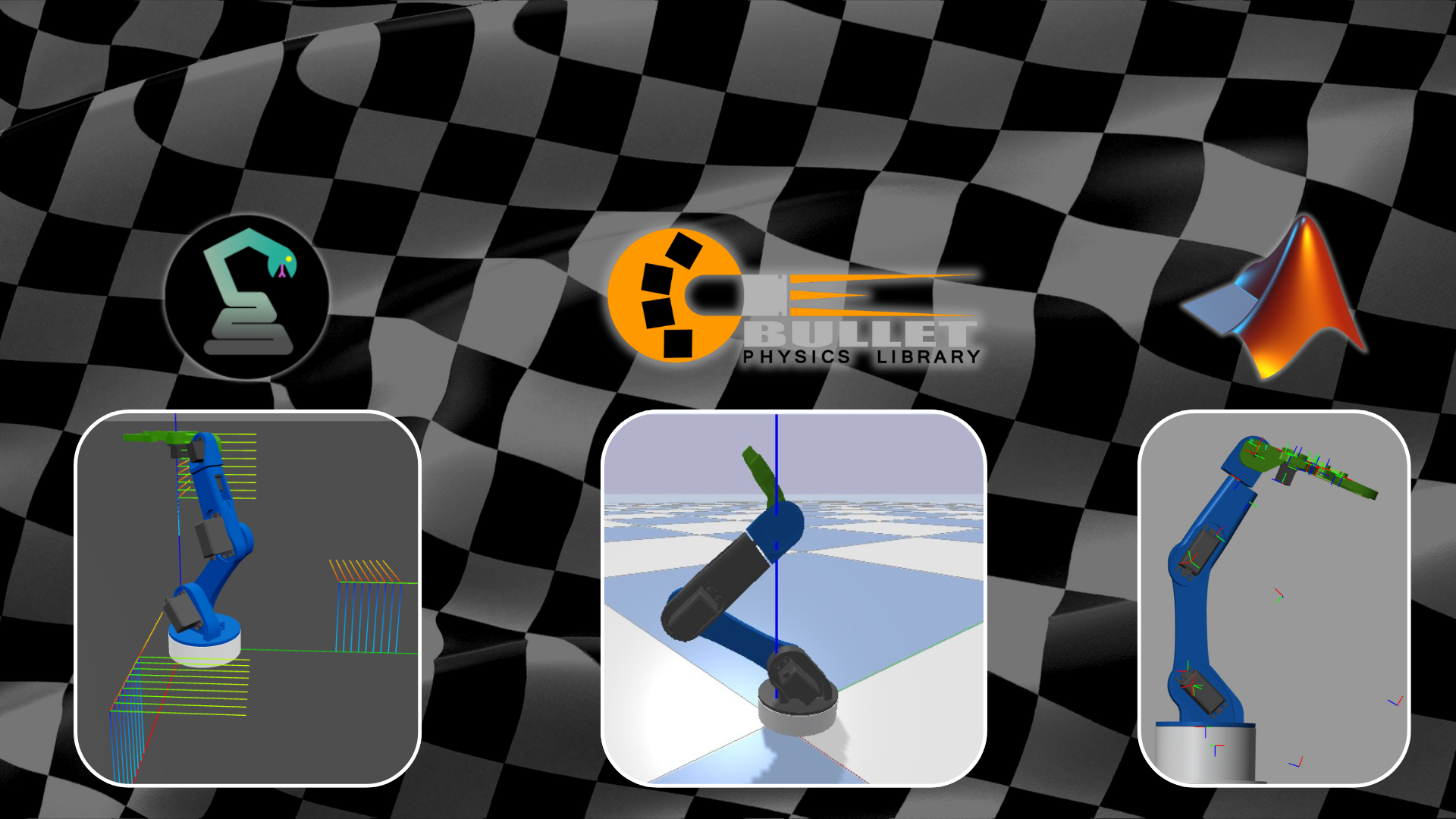Overview
This project explores the modeling, simulation, and control of a robotic arm using three different simulation environments: PyBullet, Roboticstoolbox (Python), and Simscape. The objective is to analyze and compare the capabilities of each tool in handling forward and inverse kinematics (FK & IK), control systems, and physics-based simulations. The study aims to provide insights into the strengths and limitations of each software for robotics research and development.
Simulation
1- PyBullet Robot Simulation
This Project provides a simulation setup using PyBullet to load and control a robot model.
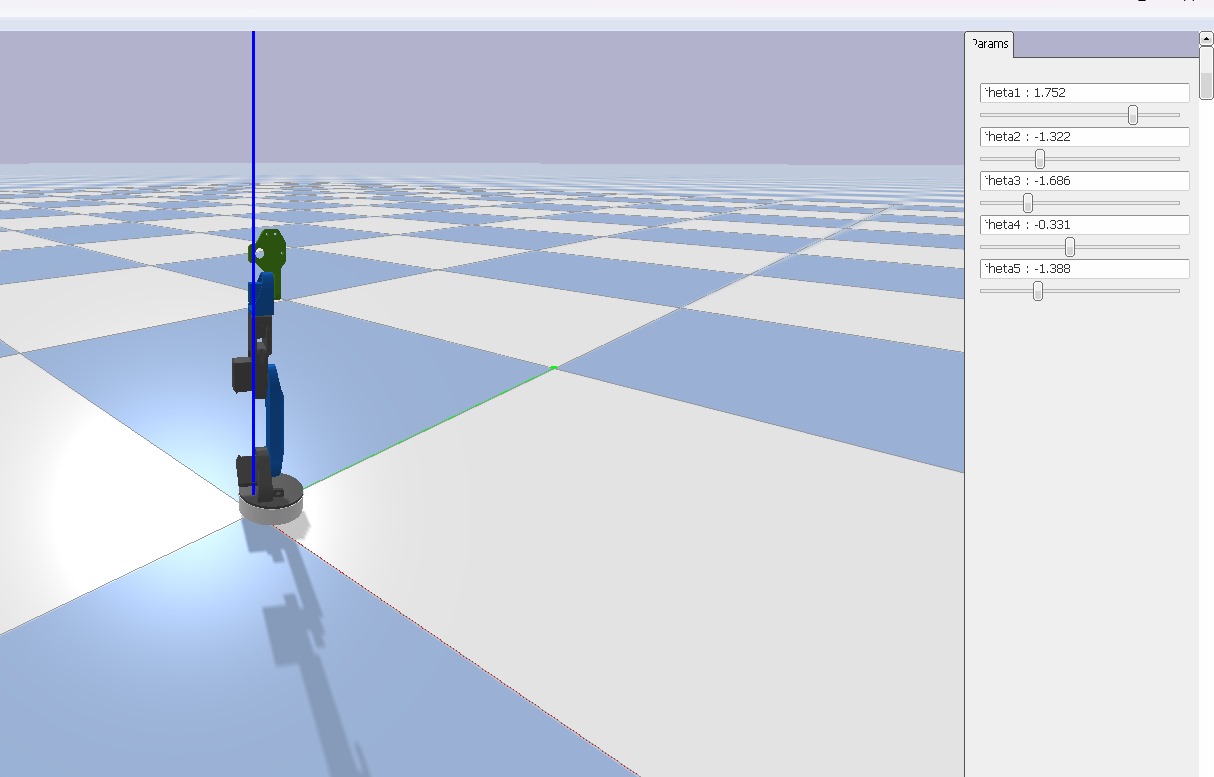
Features
- Gravity and Physics Setup: Configures gravity in the simulation.
- Joint Control: Creates sliders for each robot joint to control their positions interactively.
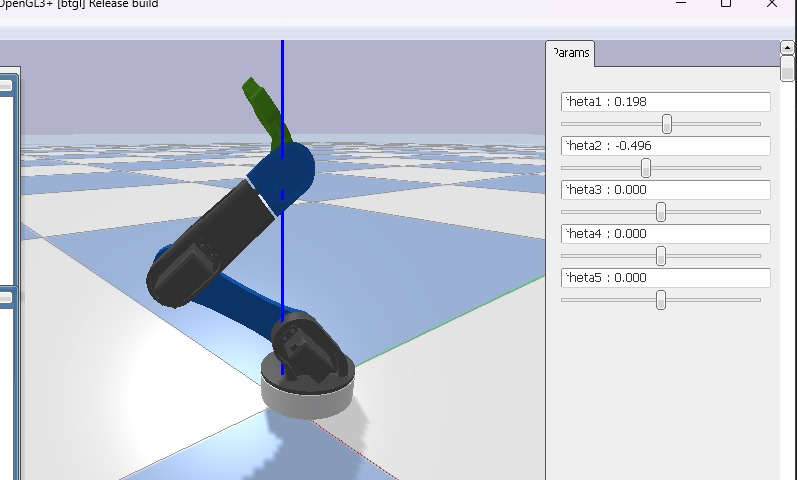
- Collision Detection: Detects and logs collisions between the robot’s links and other objects in the environment.
2- Roboticstoolbox(Python)
This code combines simulation, kinematics, and control to visualize the motion of a robot arm.
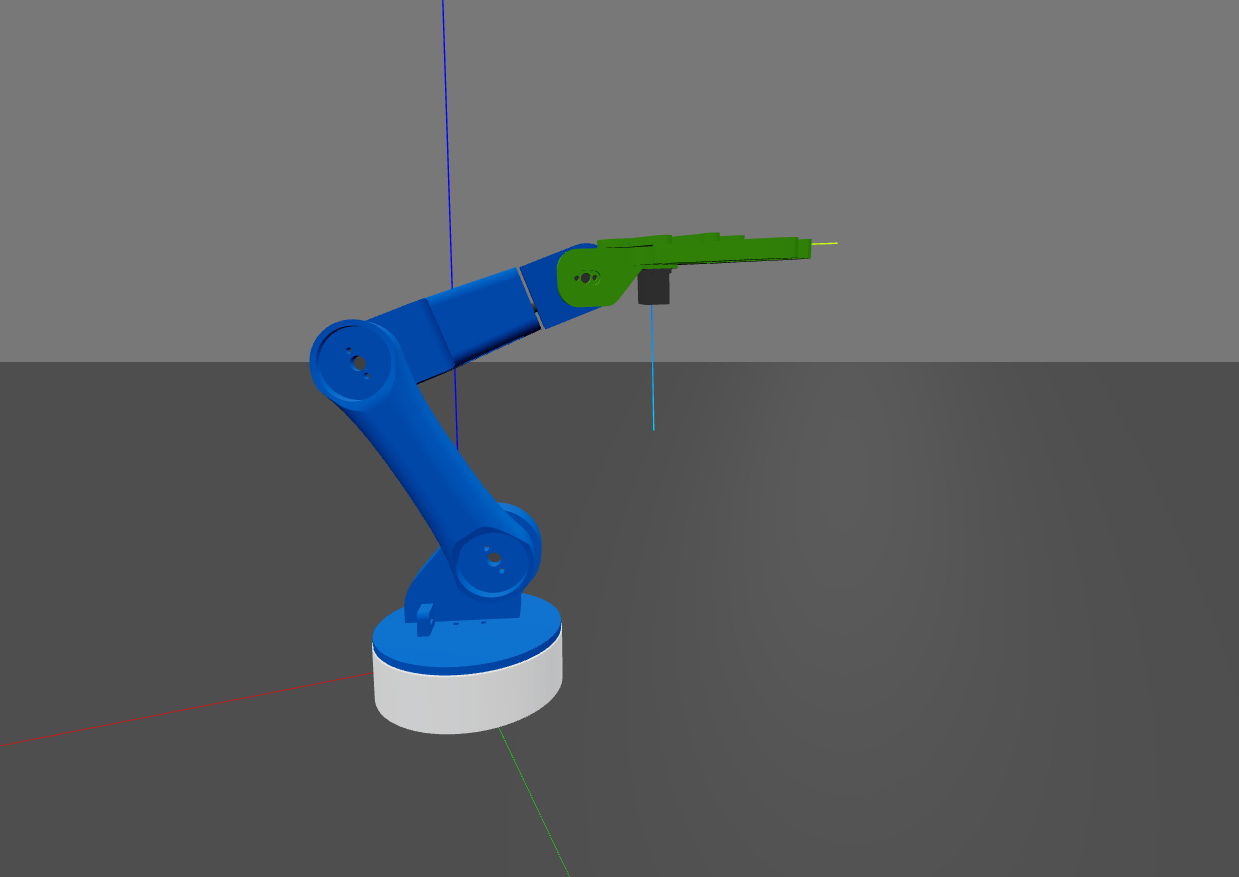
Libraries and Tools
- roboticstoolbox: Used for modeling and controlling robots.
- swift: Provides a 3D visualization interface for robotics simulation.
- spatialmath: Handles transformations like rotations and translations.
- spatialgeometry: Adds geometric primitives for visualization.
Functions
- move_to_position: Moves the robot’s end-effector to a target position using servoing. Computes joint velocities using the Jacobian and pseudoinverse.
Execution
Sequential movements along the x, y, and z axes demonstrate the robot’s capability.
.png)
.png)
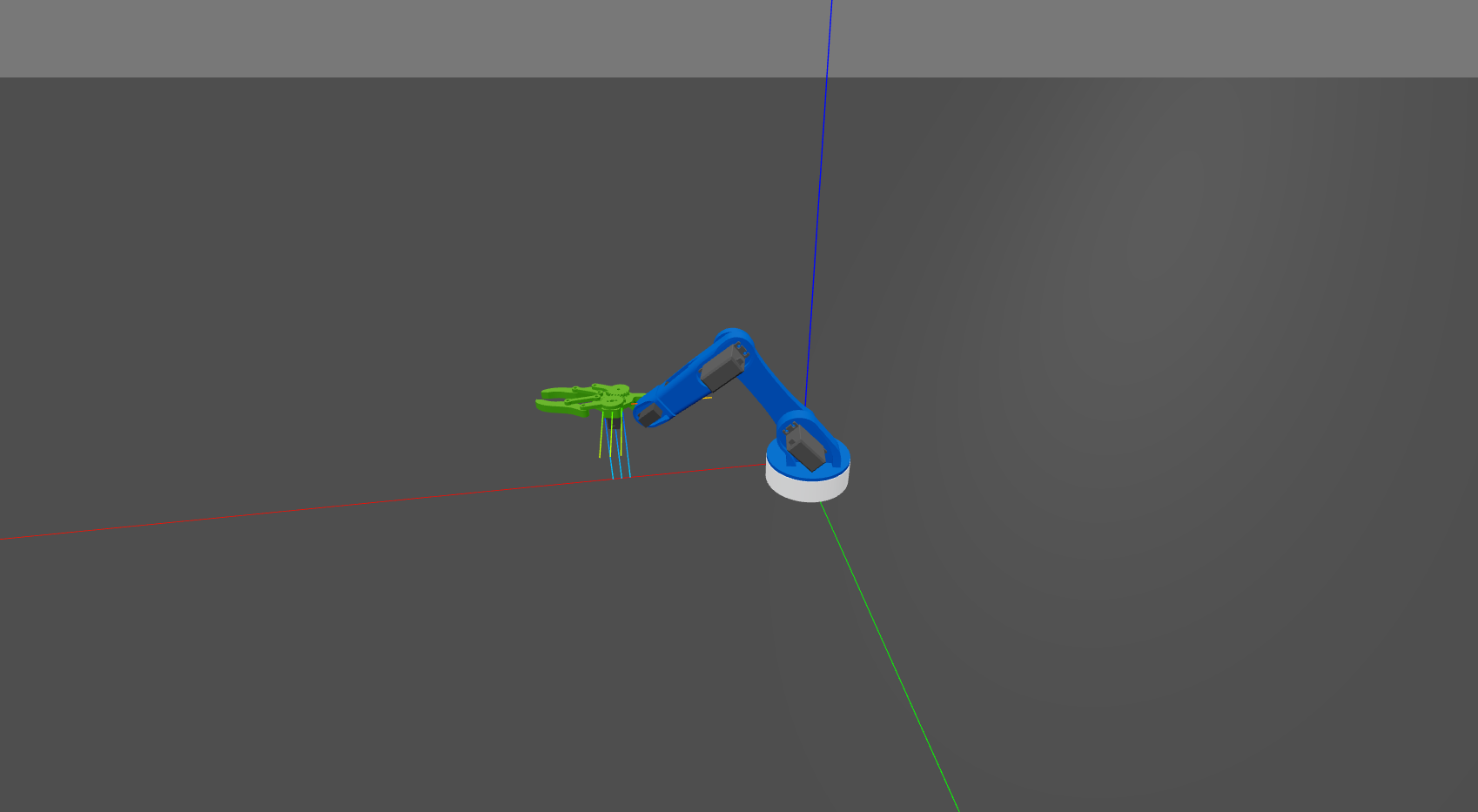
3- Simscape
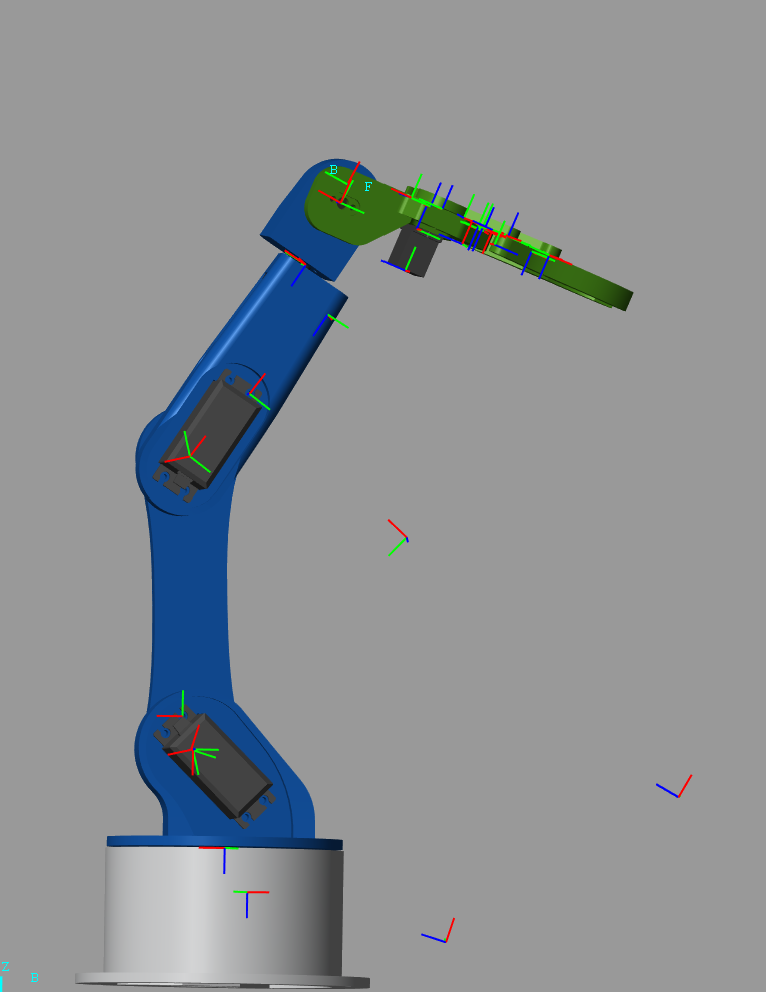
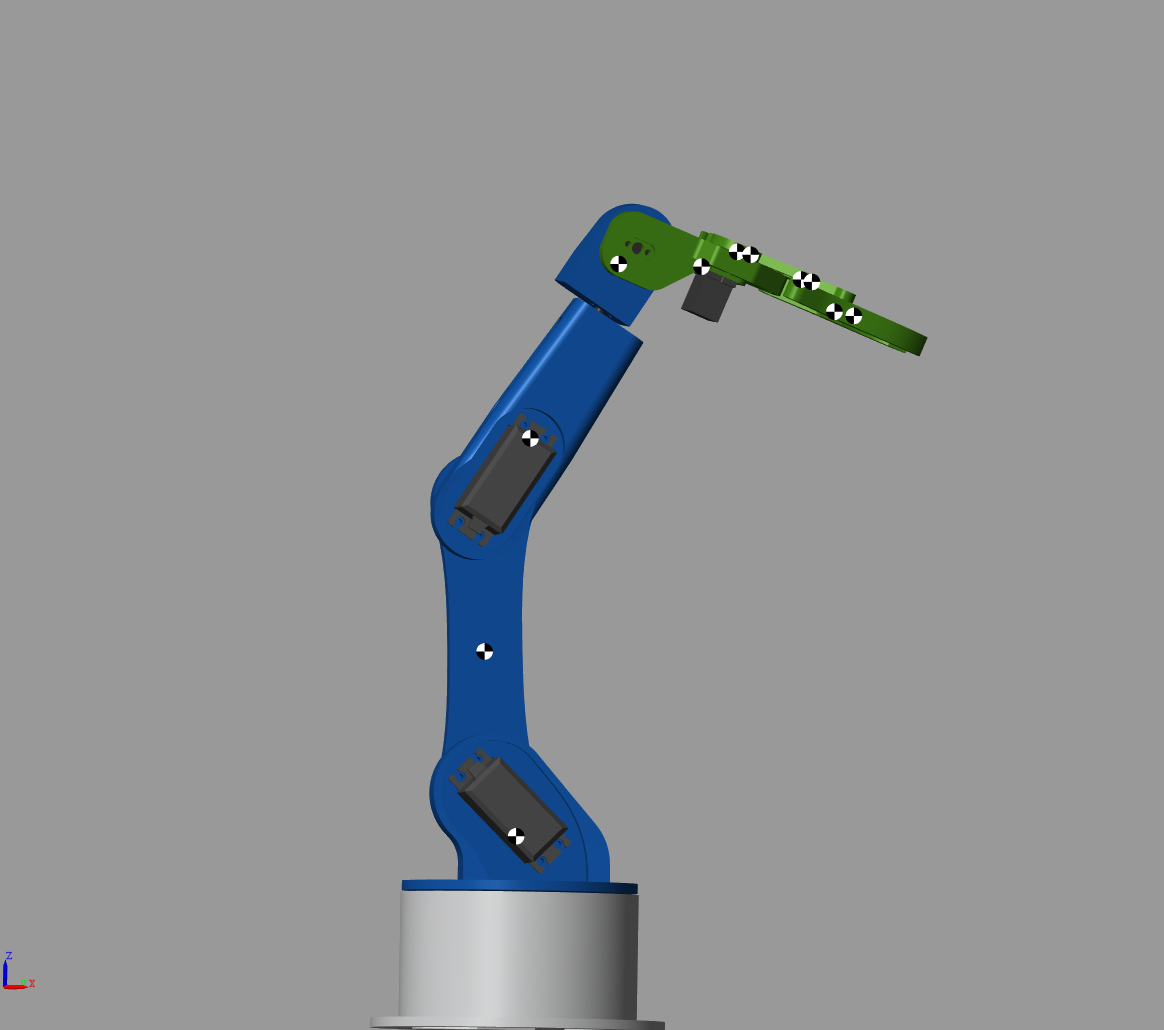
The model is structured as a Rigid Body Tree, which is subsequently transformed into a Simscape model. The Simscape model allows control over the arm’s actuation through motion and torque inputs.

Actuation Control:
- Control the motion and torque of the arm’s joints.
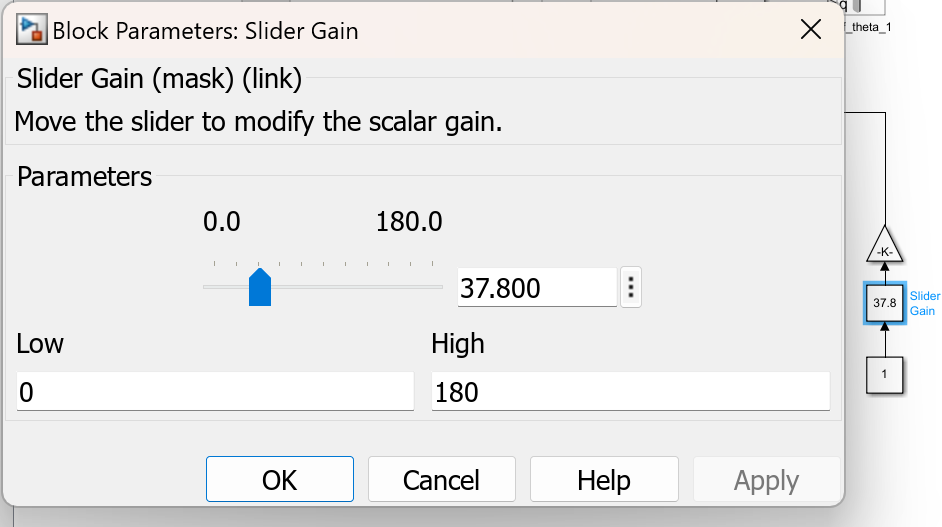
Control System Design:
- Low-Level Control: Adjust motion inputs directly using sliders.
- High-Level Control: Implement a PID controller to manage motion and torque inputs.
Low-Level Control (Motion Control)
- Use the slider blocks in Simulink to adjust the motion of individual joints.
High-Level Control (PID Control)
- Use the provided PID controller block to control both motion and torque.
- Adjust the PID parameters to optimize performance.
Results
The simulations demonstrate the effectiveness of PyBullet, Roboticstoolbox, and Simscape in modeling and controlling a robotic arm. Each tool offers unique advantages:
-
PyBullet provides real-time physics simulation and collision detection, making it useful for dynamic interaction studies.
-
Roboticstoolbox allows precise FK and IK computations with real-time visualization, beneficial for motion planning.
-
Simscape integrates with Simulink for advanced control system design, making it ideal for evaluating different actuation strategies.
Through this comparative study, we gain a better understanding of how different software tools contribute to the simulation and control of robotic systems, guiding future research and development in robotics applications.
Contributors
- Errouji Oussama
- Imad-Eddine NACIRI
- Jade Bousliman
